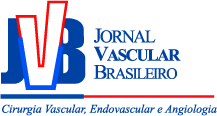Estudos de medicamentos biosimilares
Studies on biosimilar medications
Winston Bonetti Yoshida
Resumo
Palavras-chave
Abstract
Keywords
Referências
Medicamentos. .
Harenberg J, Kakkar A, Bergqvist D. Recommendations on biosimilar low-molecular-weight heparins. J Thromb Haemost. 2009;7:1222-5.
Kishimoto TK, Viswanathan K, Ganguly T. Contaminated heparin associated with adverse clinical events and activation of the contact system. N Engl J Med. 2008;358:2457-67.
Nosé Y. Hemodialysis patients' deaths in the USA by contaminant suspected heparin originating from China. Artif Organs. 2008;32:425-6.
Cavalheiro Filho C, Chamone Dde A, Rached RA, Maffei FH. Heparins - current status. Rev Assoc Med Bras. 2008;54:471-2.
Melo EI, Pereira MS, Cunha RS, Sá MP, Mourão PA. Heparin quality control in the Brazilian market: implications in the cardiovascular surgery. Rev Bras Cir Cardiovasc. 2008;23:169-74.
Guerrini M, Guglieri S, Naggi A, Sasisekharan R, Torri G. Low molecular weight heparins: structural differentiation by bidimensional nuclear magnetic resonance spectroscopy. Semin Thromb Hemost. 2007;33:478-87.
Gray E, Mulloy B, Barrowcliffe TW. Heparin and low-molecular-weight heparin. Thromb Haemost. 2008;99:807-18.
Gray E, Rigsby P, Behr-Gross ME. Collaborative study to establish the Low-molecular-mass heparin for assay-: European Pharmacopoeia Biological Reference Preparation. Pharmeuropa Bio. 2004;2004:59-76.
Fareed J, Bick R. Differentiation of low-molecular-weight heparins: practical implications. Clin Appl Thromb Hemost. 2004;10:299-300.
Maffei FH, Pinto AM, Fabris VE, Lastória S, Rollo HD. Experimental venous thrombosis in guinea pigs: effect of heparin and drugs affecting platelet function (author's transl). Rev Bras Pesqui Med Biol. 1977;10:369-78.
Maffei FH, Rollo HA, Fabris VE. Prevention of experimental venous thrombosis induced by contrast medium in the rat. Acta Radiol Diagn (Stockh). 1980;21:249-52.
Lastória S, Thomazini IA, Cury PR, Maffei FH. Platelet activation in experimental arterial thrombosis. Braz J Med Biol Res. 1987;20:611-3.
Yoshida WB, Maffei FH, Lastória S, Curi PR, Rollo HA. Lumbar sympathectomy and distal arteriovenous fistula as adjuncts to prevent arterial rethrombosis after thrombectomy: experimental study in dogs. J Cardiovasc Surg (Torino. 1988;29:19-25.
Lim W, Dentali F, Eikelboom JW, Crowther MA. Meta-analysis: low-molecular-weight heparin and bleeding in patients with severe renal insufficiency. Ann Intern Med. 2006;144:673-84.
Piaggio G, Elbourne DR, Altman DG, Pocock SJ, Evans SJ. Reporting of noninferiority and equivalence randomized trials: an extension of the CONSORT statement. JAMA. 2006;295:1152-60.
Rothmann MD, Tsou HH. On non-inferiority analysis based on delta-method confidence intervals. J Biopharm Stat. 2003;13:565-83.
Comparação de duas proporções. .
D'Agostino RB Sr, Massaro JM, Sullivan LM. Non-inferiority trials: design concepts and issues - the encounters of academic consultants in statistics. Stat Med. 2003;22:169-86.
Halvorsen PA, Selmer R, Kristiansen IS. Different ways to describe the benefits of risk-reducing treatments: a randomized trial. Ann Intern Med. 2007;146:848-56.
McQuay HJ, Moore RA. Using numerical results from systematic reviews in clinical practice. Ann Intern Med. 1997;126:712-20.
Jüni P, Witschi A, Bloch R, Egger M. The hazards of scoring the quality of clinical trials for meta-analysis. JAMA. 1999;282:1054-60.
Pinto V. Seminário sobre Estudos de Não-Inferioridade: III Fórum de atualização em medicamentos biológicos; 2010 Fev 26. 2010.



